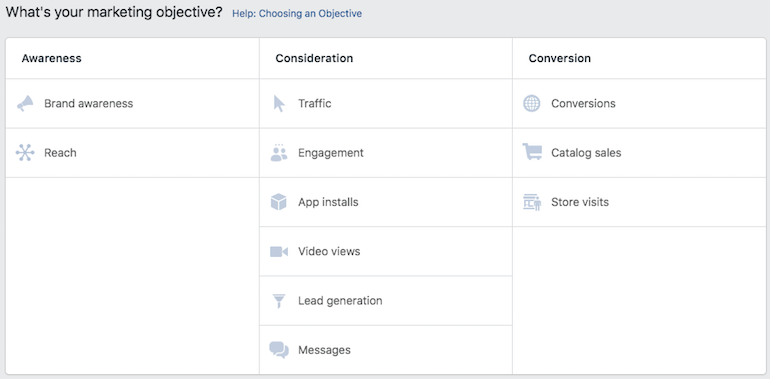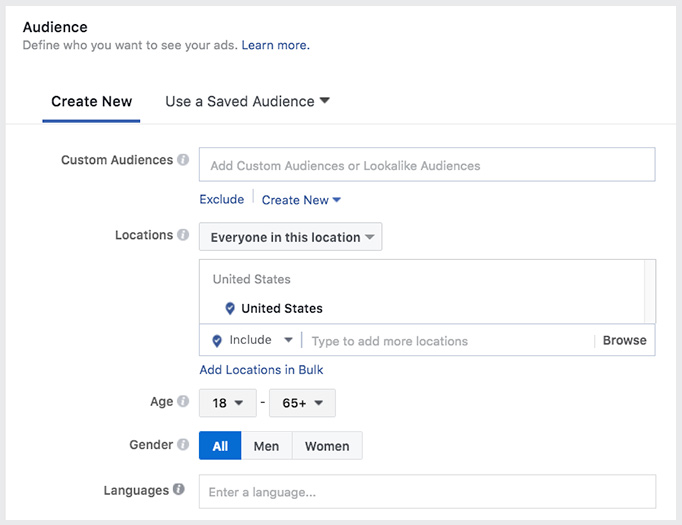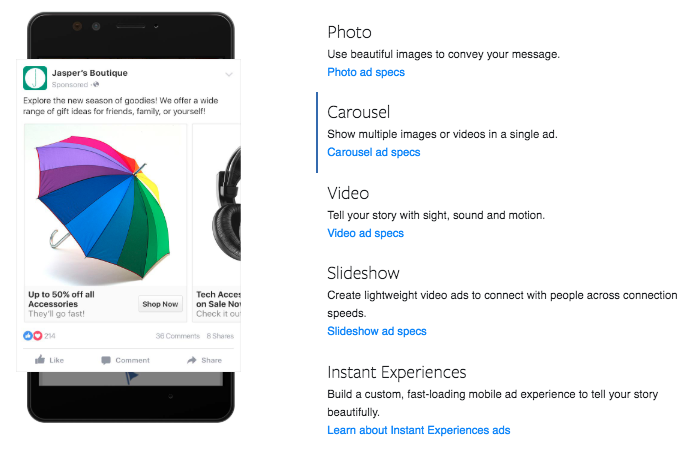[ad_1]
For the longest time, I and the PPC industry as a whole, have defaulted and still in a lot of circumstances still default to a Google Paid Search first strategy.
Google Ads is still the number 1 platform, and is still required in any digital marketing strategy. It can produce great results, but in some industries that have more obscure keywords and when higher results are needed, I now choose Facebook as one of the first platforms I use. It is always at the top of the list.
Reason 1: Campaign types and goals
With Facebook, I can create multiple types of campaigns all aimed at very different strategies. So, for my lead gen account, I can create a direct lead form campaign and for my ecomm client, I can just as easily integrate and create a shopping campaign or remarketing campaign using my shopping feed. Also, I can then have Facebook optimize to my goal. So for lead forms or website conversions, I can make sure that whatever my targeting type, Facebook is helping me optimize towards that specific goal.
The other benefit of Facebook is that there are more options than just clicks and conversions as goals.
I can use campaigns based on 3 broader goals of awareness, consideration and conversion. This helps funnel out my strategy and get in front of more people, create engagement and ultimately convert my audience.
Reason 2: Targeting options
Targeting is another reason Facebook wins, is the targeting options when tied to the goal of the campaign. Yes, keywords are no longer a targeting option in Facebook, but that is part of what I think it has going for it. By being able to target a type of user, I can get closer to the intended audience than I can with a broader search, especially as match type rules continue to go out the window. Keywords and searches have a ton of room for interpretation, especially between B2C and B2B, which can use similar or same phrasings, but be looking for very different things. By tying a user type through behavior, interests and demographics, lookalikes or custom audiences, I can find the people in their normal routine and encourage them to get more information, remind them of our brand, or convert.
Obviously, Google has these features too both through audiences for search as well as display, but I have found greater success with the ad types and opportunities with these audience targets in Facebook and have had more ongoing success. Also, custom audiences and lookalikes only work in certain campaign types and need a much larger list and match rate compared to Facebook.
Reason 3: Ad Types
Text or Display? Why not have both and more. Use photos and text as well as an integrated button that shows what the user will do once they click through. Will they be shopping? Downloading? Signing up? You can give clear calls to action as well as single or multi-image carousels. Video is growing exponentially, and not just the 30+ second videos, but short, gif or moving images that capture a users intention and engagement. By having these options, it is easier to test multiple variations in a single ad set and with Facebook’s optimization towards your goal and placement, it is quick and easy to learn what converts and where.
Reason 4: Results
Google Search has always been consistent and with the proper research and analysis, I can predict how a campaign will do and improve results over time, but when I have campaigns with harder-to-reach audiences through search terms, I can always count on Facebook to pick up the slack and usually outperform not only the low-performing counterpart on Google, but also some of the top performing campaigns, as well. This is due to getting away from harder to reach search intent and focusing on the user type and optimizing towards the ultimate conversion. In the case of the example below, the goal was to get brochure requests for under-performing international courses. On search, these courses would only garner 1-5 requests per month, but once Facebook was started, that went up to
Higher and Continuing Education, Asia Leadership course Example:
Data is for Last 30 Days:
Google Search Result (Keyword targeting):
- CTR: 3.85%
- Spend: $119
- Brochure Requests: 1
- Cost per brochure: $119/brochure
- Request Rate: 0.83%
Facebook Result (Interest/behavior/Demographic targeting):
- CTR: 0.44% (relative due to the frequency and impression/reach volumes)
- Spend: $2,999.20
- Brochure Requests: 52
- Cost per Request: $57.68/brochure
- Request Rate: 2.00%
This was just one example of many that I could point out to show how Facebook can easily outperform Google search. So, if you have a campaign in need of a boost, try Facebook, you may be surprised on what results you can receive.
If we would not have recommended Facebook and pressed for this test, this program would have continued to suffer and be detrimental to their success in Asia courses. By finding the right audience to target and using the correct optimization goals and ad types, we were able to turn around something they only had expectations of receiving a few requests from.
*Note: We compared front end results with back-end to match up the quantity and quality of the results. In this particular case, we had almost 100% match rate to the back-end leads and quality was high when their teams reported back to qualified interest.
Conclusion
So, the point of this run-through is not to bash or discount Google Paid Search or to say to only use Facebook ads. All platforms are important in the larger marketing mix and strategy, but each platform should be analyzed for their strengths based on the client and the industry. PPC and Digital Media is no longer cookie cutter and in some cases, has flipped, in terms of what to recommend for results.
Image credits: https://business.facebook.com/adsmanager/
Image credits: https://www.facebook.com/business/*
[ad_2]
Source link






Recent Comments